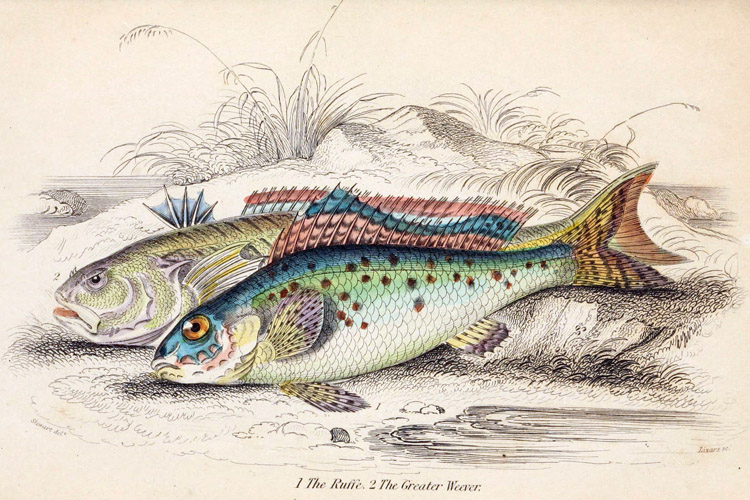The weever fish is venomous, well camouflaged, and usually attacks before and after low tide. Its sting is painful and lasting. Learn how to treat it properly.
Despite its small size, the weever fish features long, needle-sharp spines that will inject venom into their most frequent victims - surfers, beachgoers, swimmers, and fishers.
Weever fish can be found in the waters of the Atlantic Ocean, North Sea, Mediterranean Sea, and other coastal regions.
In countries like Portugal, Spain, France, Morocco, and the United Kingdom, weever fish stings are quite common, especially during summer.
It's like Russian roulette. You can be lucky and never get stung, or you can suffer the pain inflicted by its venom a couple of times during the warm season.
It's nearly impossible to spot the weever fish because they hide and rest in sandy shallow water areas near the shore.
One of the most potent venoms is injected by one of the nine species of the Trachinidae family - the lesser weever fish.
The weever fish sting is quite intense and acute because the animal is armed with toxic dorsal spines.
Initially, people think they stepped on something sharp, but after five minutes, they start feeling an intense burning pain that radiates up the leg.
You know you've been stung if you spot a small, bleeding cut on the sole or heel of your foot. The contact occurs even if you're wearing a wetsuit or booties.
Symptoms and Treatment
The most common symptoms of a weever fish sting include severe pain, fever, swelling, nausea, vomiting, headache, low blood pressure, itching, fainting, tremors, seizures, and abdominal cramps.
Deaths are extremely rare.
If a weever fish stings you, you'll notice that the pain reaches its peak roughly half an hour after the sting.
Then, it will gradually decrease. However, in some cases, the uncomfortable sensation will remain for up to 24 hours.
You should treat it as quickly as possible, but if you do not feel comfortable performing first-aid on yourself, you should immediately seek medical assistance.
The first thing you need to do is to remove the spines left on your foot. But if you're ready to treat the weever fish by yourself, do the following:
- Immerse your foot in very hot water (40 °C / 104 °F) for no less than 30 minutes;
- Use paracetamol to relieve the pain;
- Gently remove all weever fish spines from your foot using tweezers;
- Squeeze the wound to allow bleeding and wash out venom;
- Clean the affected area with water and soap;
- Rinse the wound with fresh water;
Whenever possible, wear protective footwear - surf sandals or rubber-soled beach shoes will protect your feet from the weever fish.
